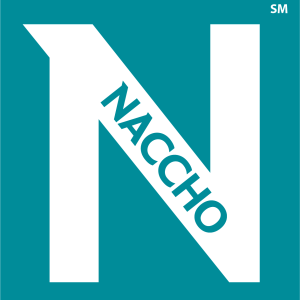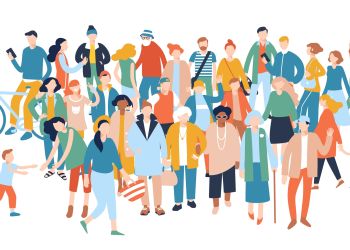A recent Podcast from Washington episode featured Dr. Jacquelyn Orr, Program Officer at RWJF, Dr. Sergey Sotnikov, Economist at CDC, and Karla Feeser, Senior Research Analyst at NACCHO where they discuss the findings from the 2019 National Profile of Local Health Departments study, how the information can be invaluable to health departments, policymakers and researchers to better understand funding, workforce capacity, and other aspects that affect the way services are resourced and delivered by local departments in their communities.
Dr. Jacquelynn Orr is a Program Officer for Research, Evaluation, and Learning at the Robert Wood Johnson Foundation (RWJF), a key funder for the Profile and Forces of Change Studies. She is a member of NACCHO’s Profile Workgroup and serves as an advisor to the Profile team on Health Equity and community empowerment.
Dr. Sergey Sotnikov is an Economist in the Performance Development, Evaluation and Training Branch at the Center for State Tribal Local and Territorial Support at the Centers for Disease Control and Prevention (CDC). Dr. Sotnikov serves as the Project Officer for the Profile and Forces of Change studies, which is funded by CDC, and provides subject matter expertise on LHD workforce, funding and infrastructure as a member of NACCHO’s Profile Workgroup.
Karla Feeser is a Senior Research Analyst at NACCHO and the Project Lead for the National Profile of Local Health Departments and Forces of Change studies.
Ian: Tell us about the Profile Study. What is it, and why is it important?
Karla: The National Profile of Local Health Departments study – or ‘Profile’ – is a survey of all local health departments (LHDs) in the United States conducted by NACCHO every three years. We have been conducting the study for 30 years to collect information on local public health infrastructure, workforce, funding, and activities. The goal of the study is to gain a comprehensive, national view of what is going on in local health departments. It really is the largest, most current, and most reliable source of data on LHDs that exists in the U.S.
Ian: What sets Profile apart?
Karla: The Profile is sent to every local health department in the U.S, and even though Profile is a very long survey that includes many topics, we get impressively high response rates – 61% in the latest Profile and over 80% in some past Profile surveys. This gives our survey credibility and ensures that we have a complete and accurate picture of local public health infrastructure and practice. Furthermore, Profile data are probably used more extensively by researchers, policymakers, and practitioners than data from any other survey of LHDs. So LHD leaders should feel confident that their time completing the survey was well-spent – the information doesn’t just end up in someone’s file or in one journal article, right? It’s used over and over again to impact the field and drive policy change.
Ian: Dr. Orr, why is the Profile important to the Robert Wood Johnson Foundation, and how is your organization involved in the study?
Dr. Orr: RWJF supports the Profile and Forces of Change surveys as a funder, advocate and partner. We do this as part of our broader effort to lift up the amazing work that LHDs do, and to make the case for what support is needed, and why. These surveys help us to better understand the challenges faced by LHDs, which in turn allows us to better support them as well as provide more recognition for innovative approaches to protecting public health within their local communities. The Robert Wood Johnson Foundation works in real time to understand the challenges faced by local health departments. What we’ve found is that the issues are familiar –the same issues we’ve been seeing for years are now more acute than ever, especially in the context of COVID-19. The Profile study represents a snapshot of local public health practice and infrastructures that serves as the basis for understanding the evidence for promising innovations and practices to alleviate these challenges across the country.
Ian: Dr. Sotnikov, can you tell us why the Profile is important to CDC?
Dr. Sotnikov: I work in one of the twelve CDC centers, the Center for State Tribal Local and Territorial Support, and for many years, my job has been to work closely with the NACCHO Profile team and to provide data support for their work. The NACCHO Profile study is a major source of comprehensive information about Local Health Department activities, structure and workforce. It provides data that is critical for planning and decision-making and fits well within our Center’s strategic plan. One of the important goals of our Center is to foster data driven decision making among public health leaders and practitioners. Collaborating with NACCHO on Profile data collection helps us to achieve that goal. The Profile data are used in our center for monitoring, tracking, evaluation and research. For example, we use it to track the progress of the Healthy People 2030 Public Health Infrastructure objectives. We also use it in our evaluation of quality improvement initiatives, and to monitor local health department accreditation status. Additionally, we use the data for public health workforce enumeration and to inform the content of our training programs, such as expanding the Public Health Associate Program. Finally, we have a data sharing agreement in place with NACCHO that allows us to distribute the data to other Centers within CDC where it has been used to inform policy development, research, funding, and public health programming across the organization. So, you can see that the Profile data is widely used at CDC.
Ian: What do you think is the most compelling piece of information in Profile, and why?
Dr. Sotnikov: For us, it’s changes in public health workforce capacity. Public health is a labor-intensive enterprise. Most of the money spent in public health covers wages. According to Profile data, LHD budgets and workforces have been hit hard by the 2008 Recession — losing nearly 25% of their workforce since that time. Such a drastic decline has limited the ability of LHDs to respond to threats like COVID-19. We need to find ways to improve hiring, retention and training in the public health workforce in order to run the programs that improve health outcomes.
Dr. Orr: I agree, and I can add that workforce data is always so important. We know that LHDs are needed now more than ever, because we know that public health saves lives. For example, it is the public health workforce that communicates information about COVID to the community, conducts wide-spread testing, coordinates with schools on safe opening practices. They are the ones doing the contact tracing, prepping for vaccine distribution, and so much more. The workforce is integral and essential for us to deliverable public health services in a manner that is equitable, and for supporting education and awareness efforts.
Ian: The Profile data was collected in 2019, but we’re in the middle of a pandemic now. How does that impact the importance of the Profile study? Has the pandemic exacerbated any of the issues brought to light in the Profile data?
Dr. Orr: “The pandemic has definitely exacerbated existing issues in local public health. We can see that LHDs are being stretched by COVID, and the Profile data provides the context for us to better understand why.”
The shrinking public health workforce is a result of many years of reduced investment in local public health – trends that we can see in the Profile data. At RWJF, we also collect data in real time, talking to LHD staff and leadership to keep our finger on the pulse of what is happening on the ground. Having that real time feedback in the middle of a pandemic is essential. We can’t wait until the next survey to understand the impacts of COVID-19 – we need to talk to folks now—but having the 2019 data from Profile to support our findings and provide context for decision-making is key.
Karla: To Dr. Orr’s point – the Profile study conducted every three years, so it represents an extremely comprehensive snapshot in time of the local public health landscape. To keep this picture up to date, NACCHO conducts the Forces of Change survey each year that the Profile survey is not fielded. The Forces of Change survey is typically much shorter, with the goal of collecting key data on the most important ‘forces’ impacting local public health. Alongside the core economic surveillance questions included in each iteration of the survey, this year’s Forces of Change survey will collect key data on the impacts of COVID-19 response on LHDs and on preparedness capacity, more broadly.
Dr. Sotnikov: We also believe that the COVID pandemic will bring major changes to the way public health services are delivered. We expect shifts in responsibilities and priorities at each level of public health service delivery. We also expect that we will see improved communication and cooperation, and hopefully more sophisticated, efficient technical and IT solutions as result of the COVID-19 pandemic. These are challenging times, and the Profile data remain important and useful for public health decision-making, and to help us to track and measure changes in public health practice and infrastructure through the pandemic and beyond.
Ian: The saying used to be, “When public health is doing its job, all is quiet.” With the COVID-19 crisis, there is more visibility around local public health than ever before, with some local health officials being scapegoated or even being forces out of their jobs due to political pressure. As congress and the federal administration put together the next COVID funding packages, what you think is the most important thing that they should take away from the Profile study and this interview?
Karla: To me, 2019 Profile is a near perfect snapshot of the status of local public health immediately preceding the onset of the pandemic. We’ve talked already about how the shrinking capacity of the public health workforce jeopardizes the safety of the food we eat, the water we drink, and the ability of our communities to prepare for and respond to public health emergencies. The Profile data also shows us the impact of our funding landscape. In 2019, fewer LHDs reported budget cuts than did in any of our previous Profile surveys going back to 2008 and consequently the rate at which the workforce has shrunk is showing signs of slowing, but it’s still going to take decades for the local health department public health workforce to recover from the cuts suffered in 2008, if nothing changes. But we’re seeing the impact of those funding and workforce cuts play out now, especially cuts to preparedness funding, which is also captured in the 2019 Profile survey. These data give us the ability to advocate for that change and demonstrate how critical consistent funding is to ensure that LHDs can address all of the needs in their community and also respond to emergencies as they arise.
Dr. Orr: I agree. Workforce is definitely important, especially as we see a number of people leaving their roles right now as a result of both pushback and budget cuts. I would add to that an emphasis on the importance of incorporating equity, race and community participation into those conversations. To that end, the Profile data can provide key insights related to LHD partnerships. The old framework of the three-legged stool (Public Health, Social Services & Healthcare Systems) has evolved, and multi-faceted partnerships are the key to implementing the health equity and social determinants of health work that RWJF works to foster.
For more information or to hear the interview in its entirety, download the full Podcast from Washington episode. All Profile and Forces of Change findings are available online at Please visit naccho.org/profile. There you will find an electronic version of the Profile report, research briefs related to Emergency Preparedness and Workforce trends, and a form to request Profile data.










